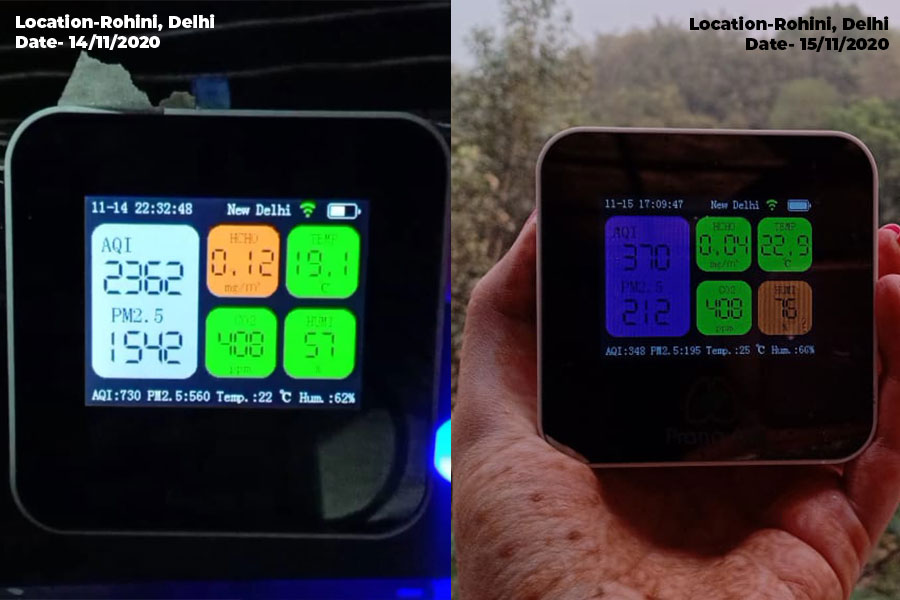Most of us love a sudden downpour. It relates to happiness, glee, and positivity. It unleashes our inner child who wants to get out, get drenched in splashes, and dance with joy. Let us give you pluviophiles another reason to love rain, and also to those who don’t. Read more to find out the effect of rain on air pollution.
Rain, Rain, Come Again!!
Rain is a form of precipitation that is responsible for depositing most of the freshwater on the surface of the earth. But what is astounding is that the natural shower also reduces air pollution and enhances the air quality of a place.

The weather is a strong determinant for air pollution. This environmental component is instrumental in deciding whether the air around you is breathable.
Rain is the environment’s best friend. It settles the pollutants down and thus washes them down the drain.
Rain in Winters, a friend or a foe?
We know winter is the season of comfort. You think about a cold day, and it immediately takes you to your room wrapped up in a blanket in front of a heater, sipping coffee. Add rain to the mix, and you’d want fritters and slow music. You’d wish to cancel all your outdoor plans. However, let’s give you an unusual idea. The next time it rains, don’t restrict yourselves to the four walls. Perhaps, plan an outing or a long drive after the showers stop. Feel the difference in the air.
Winter is the season when the temperature dips, but the levels of pollution rise. Winter pollution is a well-acknowledged phenomenon. It happens due to atmospheric inversion in which the cold air in the lower atmosphere encapsulates the pollutants within them and not letting them escape in the upper layers.
Effect of Rain on Air Pollution
Rain eases this problem by forcing down the most common air pollutants, like particulate matter and pollen down. Thereby, the quality of air becomes drastically better. This phenomenon is called wet deposition.
It is the natural process that eliminates the material through atmospheric hydrometeors, like rain, hail, and snow. It delivers and deposits the contaminants to the ground. The process is also known as precipitation scavenging, rainout, wet removal, or simply washout.
Therefore, the grey days, in reality, can add colours and blossom to your lives by relieving you from the atrocity of air pollution. After all, you reflect what you breathe.
Many researchers have been studying the effect of rain on air pollution. This correlation was crucial in the understanding to devise ways to protect the infrastructure, the environment, and the population from the clasp of air pollutants. By the same logic as wet deposition, authorities are trying the use of aerial sprays of water and other liquids to enhance the air quality on the days things go south.
What happened in Delhi after Diwali2020- A case study
Delhi is infamous for the annual winter pollution. The levels of pollutants, including PM2.5, hit the roof starting mid-October. The air quality index persistently falls under the ‘hazardous’ category. A blanket of haze and smog surround the sky, thus leaving the citizens gasping for breath. Many reasons concoct this mesh of pollution in the Delhi sky, one of them being the burning of fire-crackers during the festivities of Diwali.
This year, the government raised the alarm right on time and banned their bursting. However, many people flouted the ban, and evidently, the quality of air plummeted. The real-time air quality index broke the scale in the areas where people burst fire-crackers on the night of the festival. The national capital was no less than a living gas chamber. People were horrified and anticipated polluted air for the coming few days.
But the scene transformed the next day! An unexpected downpour on the mildly-cold afternoon improved the air quality by a huge difference. The sky got clear, and the air became better.
We monitored the air quality and PM2.5 levels on Diwali and after. As seen in the picture, the real-time air quality index of our location stood at 2362 during the peak hours of the festival. However, the value dipped to 370 after a few hours of drizzle the next afternoon. The former falls into the ‘hazardous’ category, while the latter value belongs to the ‘severe’ category. Albeit both these values are detrimental to humans and the environment, but the difference in the values isstill a little relieving.
Therefore, we confirmed the positive impact of rain on the air quality.
To monitor the air quality of your place, head to www.aqi.in
(Instrument used- Prana Air CAIR+)
This post is also available in:
![]() Global
Global ![]() IND English
IND English ![]() UK English
UK English ![]() US English
US English
